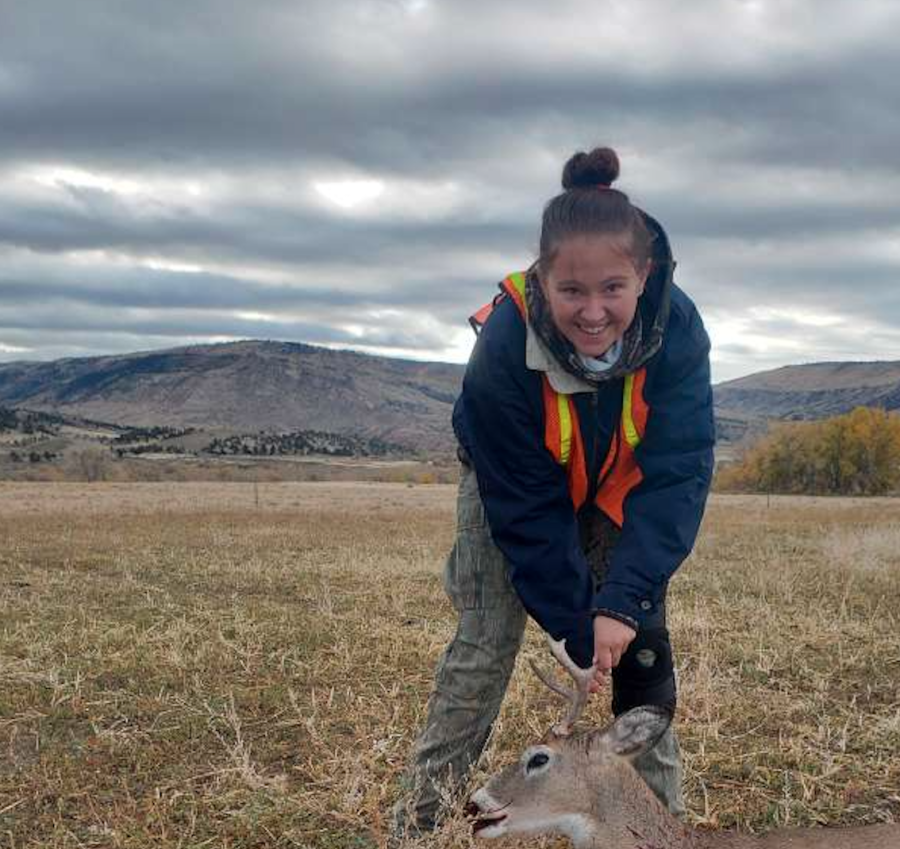Chronic wasting disease is spreading to new hunting areas
Harlee Schamber poses with a white tailed deer she harvested in hunt area 88. She and her family are waiting for the CWD test results before consuming the meat.
November 23, 2021
Wyoming Game and Fish recently affirmed that CWD was discovered in hunting areas that had not previously been affected. Confirmed cases have spread all along Wyoming, including the Pinedale region where sick deer were found in area 138 (which is also elk hunt area 98). Additional areas that have already tested positive for CWD include elk hunt areas 35, 37, and 46. This shows that CWD is spreading into other habitats, and directly affecting cervid species in other regions, making it harder to control. This issue doesn’t only affect the short duration of this year’s hunting season, but leaves room to question what this might mean for next year’s deer and elk populations.
Harlee Schamber, NC student and avid hunter, says that testing for CWD and trying to ensure safety and knowledge about how it works, is an efficient way of handling information given through the study of the disease. “It is pretty well advertised,” she explained, referring to how the Game and Fish is making hunters aware of CWD. “They have testing at meat processors, and I’m sure that they are in the hunting regulations.” Check stations, located near most hunting areas, may also have testing options. Getting harvested animals tested will help the understanding of the disease and lead to possible solutions in controlling it, benefiting future deer, elk and moose populations.
It is advised not to consume any infected meat, since the Game and Fish department does not know for certain that CWD can directly be transmitted to humans. They prefer that human consumption should not occur until more data is gathered. Studies suggest that feces, urination, ingestion, and carcasses might be able to spread CWD among animals, but there have been no documented cases of human transmission.
Chronic wasting disease (CWD) is a 100% fatal disease that attacks the central nervous system in white-tail deer, mule deer, moose, and elk. “Basically, it affects the animals brains, causing them to die,” Harlee explained. Lameness and lethargy in animals are common symptoms of CWD. Frothing from the mouth, droopy ears, and rapid weight loss, are the major signs of an infected animal. They also excessively drink and urinate, which causes the illness to spread, but those are typically not noticed by hunters. Also, in early stages of infection, animals may fail to have symptoms, meaning a visibly healthy animal can easily have CWD. This is why it is crucial to take precautions, for safety and study, and get harvested animals tested.
https://wgfd.wyo.gov/Wildlife-in-Wyoming/More-Wildlife/Wildlife-Disease/Chronic-Wasting-Disease
https://wgfd.wyo.gov/News/CWD-found-in-new-Wyoming-elk-hunt-areas

